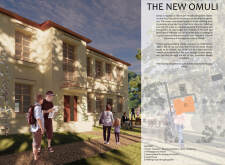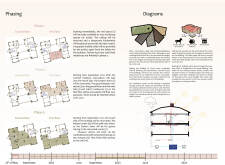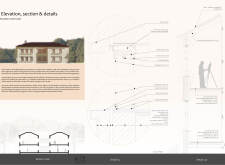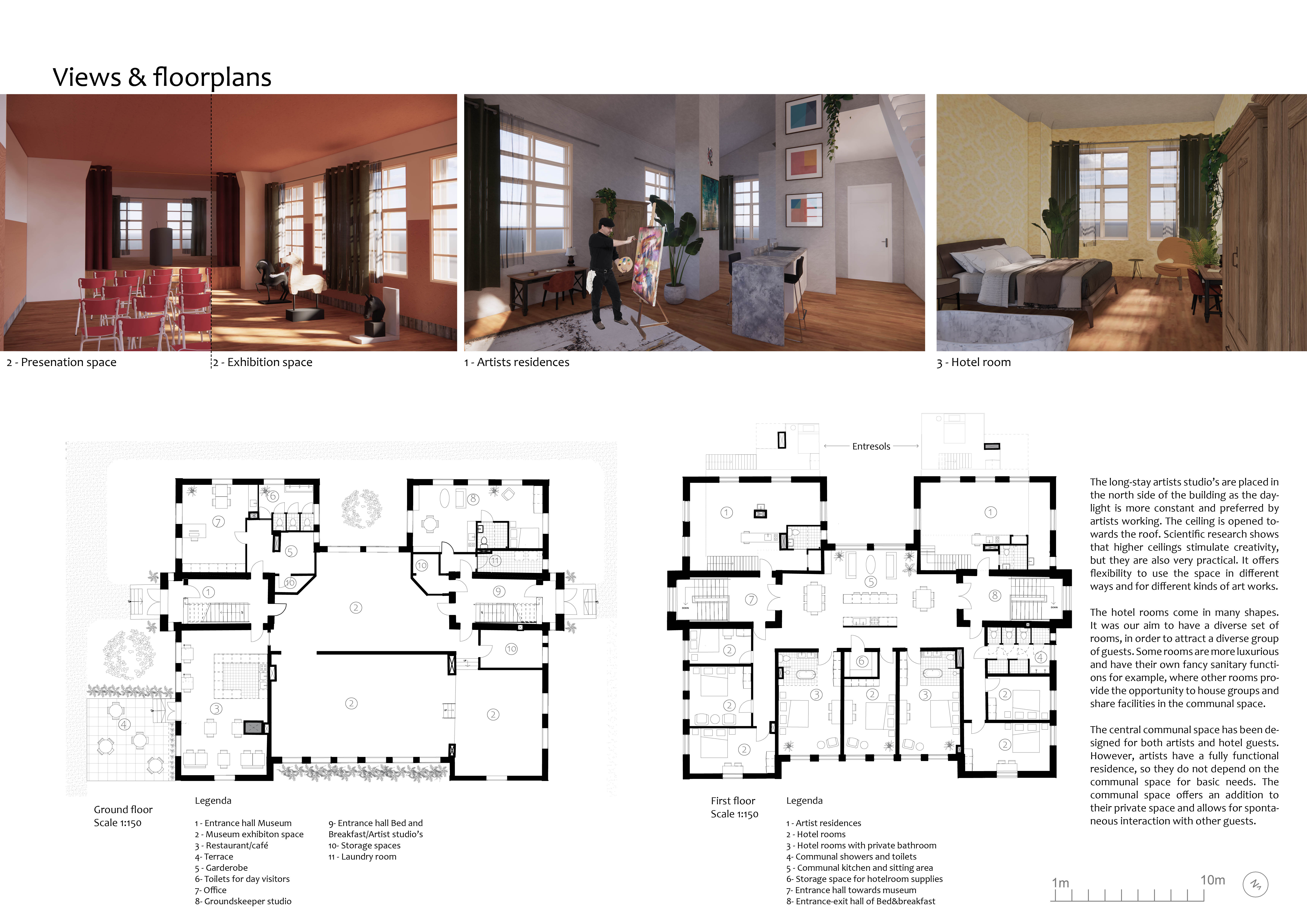5 key facts about this project
The primary function of the New Omuli is to serve as a space for creative individuals while also appealing to tourists. The design facilitates interactions among visitors and residents alike, fostering a community oriented around creativity, relaxation, and cultural appreciation. The building’s layout reflects careful consideration of spatial dynamics, ensuring that distinct functions coexist harmoniously without sacrificing privacy or comfort.
The architectural design emphasizes historical preservation, retaining key elements of the original structure while infusing modern materials and technology. The use of brick for the exterior maintains the traditional aesthetic, while wood fiber insulation enhances energy efficiency. The inclusion of solar panels on the roof addresses sustainability, reducing the building's ecological footprint. Furthermore, sound insulation is strategically placed within the floor systems, ensuring a quiet environment conducive to artistic work.
One unique feature of the New Omuli project is its multifunctionality. Unlike typical hospitality spaces that prioritize tourism, this design integrates artist residences with public engagement zones. This dual purpose is rare and constitutes a significant advancement in addressing the needs of both travelers and artists. The inclusion of communal kitchens, exhibition areas, and artist studios fosters collaboration and interaction, inviting a continuous flow between public and private realms.
The relationship between the building and its natural surroundings is an essential aspect of the design. The thoughtful orientation of windows and communal spaces enhances natural light penetration and connects the indoor environment to the external landscape. Pathways leading to gardens facilitate engagement with nature, maximizing the site's appeal and encouraging outdoor activities for both guests and local residents.
In summary, the New Omuli project represents an innovative approach to architectural design that prioritizes functionality, sustainability, and community integration. The combination of artist accommodations and tourist facilities within a historically conscious framework showcases the potential for architecture to serve multiple purposes and enhance the cultural fabric of a location. For those interested in a deeper exploration, reviewing the architectural plans, sections, and design ideas can provide further insights into the concepts behind this project.


























